
KLIC-MITT v2
http://www.zennio.com Technical Support: http://support.zennio.com
2
CONTENTS
Contents ................................................................................................................................... 2
Document Updates ................................................................................................................... 3
1 Introduction ...................................................................................................................... 4
KLIC-MITT v2 ................................................................................................................ 4
Installation ................................................................................................................... 5
Start-Up and Power Loss .............................................................................................. 6
2 Configuration .................................................................................................................... 7
General ........................................................................................................................ 7
AC Gateway .................................................................................................................. 9
2.2.1 Configuration ....................................................................................................... 9
2.2.2 Fan ..................................................................................................................... 17
2.2.3 Flaps ................................................................................................................... 20
2.2.4 Initial Configuration ............................................................................................ 23
2.2.5 Scenes ................................................................................................................ 24
2.2.6 Error Handling .................................................................................................... 26
Inputs ......................................................................................................................... 28
2.3.1 Binary Input ........................................................................................................ 28
2.3.2 Temperature Probe ............................................................................................ 28
2.3.3 Motion Detector ................................................................................................. 28
Logic Functions ........................................................................................................... 30
ANNEX I. Communication Objects ........................................................................................... 31

KLIC-MITT v2
http://www.zennio.com Technical Support: http://support.zennio.com
3
DOCUMENT UPDATES
Version
Changes
Page(s)
[1.1]_a
Changes in the application program:
- AC unit operation time counter.
- Advanced climate control through external reference
temperature.
- New parameter: Initial status sending delay.
- New communication objects: minimum and maximum
set point limits and automatic switch-off delay.
- LED notification of internal errors.
- Optimisation of the Heartbeat module.
-
AC unit operation time counter.
9, 16
Advanced climate control through external reference
temperature.
9, 14
Initial status sending delay.
24
Minimum and maximum set point limits communication
objects.
13
Automatic switch-off delay communication object.
15
LED notification of internal errors.
26

KLIC-MITT v2
http://www.zennio.com Technical Support: http://support.zennio.com
4
1 INTRODUCTION
KLIC-MITT V2
KLIC-MITT v2 from Zennio is a new gateway that provides full-duplex communication
between the KNX home automation system and Mitsubishi Electric air-conditioning
systems through the IT Terminal interface provided by the latter. KLIC-MITT v2 adds
component improvements and electrical safety over the previous KLIC-MITT.
Because of this bidirectional communication, the air conditioning system can be
controlled from the home automation system in the same manner as it is through its
own controls. Moreover, the actual status of the unit can be monitored and periodically
sent to the KNX bus to inform other devices.
The most outstanding features of KLIC-MITT v2 are:
Bidirectional control of Mitsubishi Electric HVAC units through their IT
Terminal connector (CN105/CN92).
Control of the main functions of the A/C unit: On/Off, temperature, mode of
operation, fan speed, position of the flaps, etc.
Error management to handle specific error codes from the A/C unit itself as
well as any communication issues that may arise.
Up to five scenes.
Two analogue-digital inputs, for the connection of temperature probes,
motion detectors or binary pushbuttons or switches.
10 customisable, multi-operation logic functions.
Heartbeat or periodic “still-alive” notification.

KLIC-MITT v2
http://www.zennio.com Technical Support: http://support.zennio.com
5
INSTALLATION
Figure 1. Element scheme
KLIC-MITT v2 connects to the KNX bus via the corresponding built-in terminal (5).
Once the device is provided with power from the KNX bus, both the physical address
and the KLIC-MITT v2 application program can be downloaded.
This device does not need any external power as it is entirely powered through the
KNX bus.
The remaining elements are described next.
Prog./Test button (2): a short press on this button will set the device into the
programming mode, making the associated LED (1) light in red.
Note: if this button is held while plugging the device into the KNX bus, the
device will enter into safe mode. The LED will blink in red every 0.5 seconds
Analogue-Digital Inputs (3): input ports for the stripped cables of external
elements such as switches, motion detectors, temperature probes, etc..
Communication cable (4): cable with a CN105/CN92 connector that will
connect KLIC-MITT v2 to the A/C unit. The other end of the cable, therefore,
is intended to be connected to the IT Terminal connector in the PCB board of
the internal unit.
1. Prog./Test LED indicator
2. Prog./Test button
3. Analogue/digital inputs
4. IT Terminal connection cable.
5. KNX connector

KLIC-MITT v2
http://www.zennio.com Technical Support: http://support.zennio.com
6
Figure 2. Connecting KLIC-MITT v2 to the A/C unit
Important: if intending to control the A/C unit both through its incorporated wired
remote control and through KLIC-MITT v2, it must be taken into account that orders
sent from the wired control will have a higher priority than those sent through KLIC-
MITT v2. In addition, certain parameterisations made in the device can be ignored.
For detailed information about the technical features of KLIC-MITT v2, as well as on
security and installation procedures, please refer to the device Datasheet, bundled in
the device packaging and also available at http://www.zennio.com.
START-UP AND POWER LOSS
Depending on the configuration, some specific actions will be performed during the
device start-up. The integrator may set up an initial status to be sent to the A/C unit
after the bus power recovery, and whether certain objects should be sent to the bus
after the power recovery, as described in later sections.
On the other hand, when a bus power failure takes place, the device will interrupt any
pending actions, and will save its state so it can be recovered once the power supply is
restored.

KLIC-MITT v2
http://www.zennio.com Technical Support: http://support.zennio.com
7
2 CONFIGURATION
GENERAL
After importing the corresponding database in ETS and adding the device into the
topology of the desired project, the configuration process begins by entering the
Parameters tab of the device.
ETS PARAMETERISATION
The “General” screen is shown in the first place, containing the following parameters:
Figure 3. General
AC Gateway [enabled]
1
: entails all functions specific to KLIC-MITT v2,
relating to communication with the A/C unit and management of the climate
control system. For more information, see section 2.2.
Inputs [disabled/enabled]: enables or disables the “Inputs” tab in the tree on
the left. For more information, see section 2.3.
Logic Functions [disabled/enabled]: enables or disables the “Logic
Functions” tab in the tree on the left. For more information, see section 2.4.
Heartbeat (Periodic Alive Notification) [disabled/enabled]: this parameter
lets the integrator incorporate a one-bit object to the project (“[Heartbeat]
Object to Send ‘1’”) that will be sent periodically with value “1” to notify that
the device is still working (still alive).
1
The default values of each parameter will be highlighted in blue in this document, as follows:
[default/rest of options].

KLIC-MITT v2
http://www.zennio.com Technical Support: http://support.zennio.com
8
Figure 4. Heartbeat
Note: the first sending after download or bus failure takes place with a delay
of up to 255 seconds, to prevent bus overload. The following sendings match
the period set.
Regardless of the above parameters, the following objects are available by default:
“[AC] On/Off” and “[AC] On/Off (Status)”: allow switching on (value “1”) and
off (value “0”) the A/C unit or reading the current status, respectively.
“[AC] Temperature Setpoint” and “[AC] Temperature Setpoint (Status)”:
allow setting the desired temperature setpoint or reading the current value,
respectively. See section 2.2.1 for further information.
“[AC] Mode” and “[AC] Mode (Status)”: allow setting the desired operation
mode (either Automatic, Heating, Cooling, Fan or Dry) or reading the current
mode, respectively. See section 2.2.1 for further information.
Several error objects. See section 2.2.6.

KLIC-MITT v2
http://www.zennio.com Technical Support: http://support.zennio.com
9
AC GATEWAY
2.2.1 CONFIGURATION
KLIC-MITT v2 allows controlling and monitoring an air-conditioning unit in the same
way it would be through the wired remote control it is provided with.
Through the KNX bus, KLIC-MITT v2 can be sent orders to control the following basic
functions of the air conditioning unit:
ON/OFF switch of the air-conditioning unit.
Operation mode: automatic, heating, cooling, fan and dry.
Temperature setpoint, which can be modified within a specific range of
values, depending on the capabilities of the specific A/C unit being controlled.
Fan speed: either 2, 3 or 4, depending on the model of the A/C unit.
Position of the flaps (or vanes): either 4 or 5, depending on the A/C unit.
Moreover, KLIC-MITT v2 allows configuring several advanced functions:
External reference temperature: which allows enabling an object to use an
external reference temperature, provided by a temperature probe.
Temperature measured by the AC unit: allows enabling an object which
provides the value of the internal temperature probe. The automatic sending
can be configured based on: a period of time, a change in value or a
combination of both.
Initial configuration, which allows establishing the desired initial parameters
for the state of the A/C unit after programming or restarting the device.
Setpoint limits, to restrict the range for the temperature setpoint.
Operating time: provides the A/C unit operating time in hours and/or
seconds.

KLIC-MITT v2
http://www.zennio.com Technical Support: http://support.zennio.com
10
Automatic off, which allows an automatic and temporary switch-off of the
unit (after a pre-established delay, if desired) when the communication object
associated to this function is triggered due to a certain event.
Scenes, which allows defining specific climate control presets, to be sent to
the machine on the reception of scene orders from the KNX bus.
These functionalities imply changes in the state of the A/C unit, which therefore notifies
KLIC-MITT v2 periodically about the current state. When KLIC-MITT v2 is notified
about a change, it updates the status objects and sends them to the KNX bus. In
addition, KLIC-MITT v2 provides an error management function (see section 2.2.6),
which allows sending messages to the KNX bus in case the A/C unit reports any errors.
ETS PARAMETRIZATION
The “Configuration” tab under AC Gateway provides the following parameters:
Figure 5. AC Gateway Configuration

KLIC-MITT v2
http://www.zennio.com Technical Support: http://support.zennio.com
11
OPERATION MODES
KLIC-MITT v2 allows controlling the A/C unit operating mode through the following
objects, available by default:
“[AC] Mode”: 1-Byte object which allows selecting the A/C unit operation
mode. There will be only taken in account values that are appropriated with
some of available modes in Mitsubishi Electric units, which are represented in
Table 2.
“[AC] Mode (Status)”: 1-Byte object which allows knowing the A/C unit
operating mode status.
Object Value
A/C unit mode
0
Auto
1
Heating
3
Cooling
9
Fan only
14
Dry
Table 1. A/C unit operating modes.
Additionally, a simplified mode can be configured to select Cooling and Heating mode.
Simplified Mode [disabled/enabled]: in addition to the “[AC] Mode” and
“[AC] Mode (Status)” one-byte objects, available by default, it is possible to
commute and to verify the current operation mode through the following one-
bit objects, which get enabled after activating this parameter:
“[AC] Simplified Mode”, which allows switching to the Cooling mode by
sending it a “0” and to the Heating mode by sending it a “1”.
“[AC] Simplified Mode (Status)”, which will send a value of “0” when the
mode switches to Cooling or to Dry, or a value of “1” when it switches to
Heating. The Fan mode is not reflected in the value of this object.
VENTILATION
Fan [disabled/enabled]: enables the Fan function. See section 2.2.2.
Flaps [disabled/enabled]: enables the fan Flaps function. See section 2.2.3.

KLIC-MITT v2
http://www.zennio.com Technical Support: http://support.zennio.com
12
TEMPERATURE MEASURED BY THE A/C UNIT
Monitoring [disabled/enabled]: enables the “[AC] AC Unit Measured
Temperature” two-byte object, which provides the value of its internal
temperature sensor, which is used by the AC machine to execute the control
loop. Once enabled, a secondary parameter will show:
Sending Type [Variation / Periodic / Periodic + Variation]: sets whether
the above object should be sent only in case of a change in the value,
periodically in both cases, respectively. The latter two options bring entail
one more parameter:
Period [1…3600][s] [1…15…1440][min] [1…24][h]: sets the cycle time
for the periodic sending.
Figure 6. AC Gateway. Configuration. Temperature measured by the AC unit.
TEMPERATURE SETPOINT
The following objects to control and supervise setpoint temperature will be available by
default:
“[AC] Temperature Setpoint”: 2-Byte object that allow selecting decimal
temperature values that belong to the range [16º-31º].
“[AC] Temperature Setpoint (Status)”: 2-Byte object that provides the
Temperature setpoint status.
Note: A X.Y value will be rounded to X.0 if [Y < 5] or to X.5 if [Y ≥ 5].
Status object will be updated to the last setpoint temperature value received by the A/C
unit after a complete communication cycle and will be sent to KNX bus every time that
its value changes.

KLIC-MITT v2
http://www.zennio.com Technical Support: http://support.zennio.com
13
Setpoint limits can be configured by parameter:
Setpoint Limits [disabled/enabled]: allows restricting the range of the
temperature setpoint (from below in the Cooling, Dry and Auto modes and
from above in the Heating and Auto modes), provided that the limits are still
within the predefined limits of the A/C unit. When KLIC-MITT v2 receives an
order to send the A/C unit a setpoint which is greater or lower than the
configured limits, it will actually send the limit value.
Minimum (Cooling / Dry / Auto Mode) [16…31][ºC]: sets the upper limit.
Maximum (Heating / Auto Mode) [16…31][ºC]: sets the lower limit.
Figure 7. AC Gateway. Configuration. Temperature setpoint.
Note: if the maximum limit is lower than or equal to the minimum limit, the
limits will not be taken into account under the Auto mode.
Once these limits are enabled, several objects to modify them at run time will be
available. The values of this objects will be restricted to an interval which is defined by
the absolute limits established by the A/C unit (16ºC to 31ºC).
“[AC] Temperature Setpoint: Lower Limit”: 2-Byte object that allows
changing the lower limit at run time.
“[AC] Temperature Setpoint: Lower Limit (Status)”: 2-Byte object with the
lower limit current value.
“[AC] Temperature Setpoint: Upper Limit”: 2-Byte object that allows
changing the upper limit at run time.
“[AC] Temperature Setpoint: Upper Limit (Status)”: 2-Byte object with the
upper limit current value.

KLIC-MITT v2
http://www.zennio.com Technical Support: http://support.zennio.com
14
Notes:
If [Minimum] ≥ [Maximum], limits will not be taken in account in Auto mode
due to the incongruity. In this case, default values will be used.
These parameters only can be set as integer values in ETS. However, at run
time the associated objects allow decimal values.
REFERENCE TEMPERATURE
To control the temperature setpoint, the following objects are enabled by default:
Figure 8. AC Gateway. Configuration. Reference temperature.
External Reference Temperature Object [disabled/enabled]: enables the
“[AC] External Reference Temperature” 2-Byte object, which provides the
value of an external temperature sensor, which is used by the AC machine
as the reference to execute the control loop.
If during 3 minutes, no temperature values are received, values of the
internal probe will be recuperated again to execute temperature control, in
the same way as it will be controlled if KLIC-TS was configured disabling this
option. If a new external temperature value is received, the control will be
again executed by using this external value. The values allow to be received
in this object are include in [0-70] ºC (if different values are received, they will
be ignored).
Actually, the machine will continue to executing its control loop with the same reference
temperature, but the KLIC will send an adjusted temperature setpoint following the
following formula:
Adjusted setpoint temperature = Setpoint temp. + [AC measured temp. – External
reference temp.]
Important: If the external reference temperature is enabled, it is recommended not to
use the wired remote control or, failing that, not to change the setpoint from it.

KLIC-MITT v2
http://www.zennio.com Technical Support: http://support.zennio.com
15
AUTOMATIC OFF
Figure 9. AC Gateway. Configuration. Automatic Off.
Automatic Off [disabled/enabled]: enables the “[AC] Automatic Off” and
the “[AC] Automatic Off (Status)” binary objects, which lets performing a
temporary switch-off of the A/C unit or reading the current status This object
will be typically linked to a window sensor or a similar event trigger.
During the temporary switch-off state, KLIC-MITT v2 will still monitor any
control orders being received (setpoint, fan speed, etc.), so they can be
applied once it leaves such state.
Automatic Off Delay [1…60…3600][s]: sets the time, in seconds, KLIC-
MITT v2 waits before switching the A/C machine off. Any switch-off
order received during the delay will abort the time count. This delay can
be modified at runtime through the object “[AC] Automatic Off Delay”.
The sending of the value “0” disables the automatic off functionality.
Note: switch-on orders sent to the A/C unit from a wired remote control have a
higher priority than the Auto Off mode.
INITIAL CONFIGURATION
Initial Configuration: allows setting the desired initial state that KLIC-MITT
v2 will send the A/C unit after programming or restarting the device:
Default: the initial state will be the last one KLIC-MITT v2 is aware of.
Custom: see section 2.2.4.
SCENES
Scenes [disabled/enabled]: allows setting up different scenes (up to 5),
consisting each of them in a set of orders to be sent to the A/C unit upon the
reception of scene trigger values through the KNX bus. See section 2.2.5.

KLIC-MITT v2
http://www.zennio.com Technical Support: http://support.zennio.com
16
OPERATING TIME
Figure 10. AC Gateway. Configuration. Operating time.
The operating time of the A/A machine in hours and/or seconds can be known.
The time that A/C unit has been operating, can be known through the 2-Byte object
“[AC] Operating time”. This object can be read and overwritten during executing time.
The available parameters in ETS are:
Seconds [disabled/enabled]: enables the 2-Byte object “[AC] Operating
time (s)”. This object can be read and overwritten during executing time.
Hours [disabled/enabled]: enables the 4-Byte object “[AC] Operating time
(h)”. This object can be read and overwritten during executing time.
Initial Operation Time:
Keep Current Value: option enabled by default, which keep the previous
value.
Set New Value: allows establishing an initial operating time value.
Periodic Sending [0…65535][s][min][h]: resending period of operating time If
set to 0 the periodic send is disabled.
When operating time object reaches its maximum value, it will be send through KNX
bus (in spite of the fact that the periodical sending has not been configured) and it will
keep this value until the user reset it.

KLIC-MITT v2
http://www.zennio.com Technical Support: http://support.zennio.com
17
2.2.2 FAN
The Fan function allows sending the A/C unit orders to switch the ventilation speed
along the available levels. To that end, KLIC-MITT v2 provides both a percentage
control and a binary control.
In addition, KLIC-MITT v2 allows activating the automatic fan speed mode, in case of
being available in the unit.
Referring to the user manual of the A/C unit is advisable prior to setting up these
options.
ETS PARAMETRISATION
After enabling this function, the menu on the left will show a new tab named Fan,
containing the following parameters:
Figure 11. Fan
Number of Fan Speeds [2 / 3 / 4]: allows specifying the number of the fan
levels distinguished by the A/C unit. This determines the values of the "[AC]
Fan: Percentage Control” and "[AC] Fan: Percentage Control (Status)" one-
byte objects, which allow setting and reading the fan speed, respectively. The
following tables show the percentage values that correspond to each of the
available fan speeds:

KLIC-MITT v2
http://www.zennio.com Technical Support: http://support.zennio.com
18
Two levels:
Control Values
Status Value
Level Sent to the Unit
1-50%
50%
1 (minimum)
51-100%
100%
2 (maximum)
Table 2. Fan speed (two levels)
Three levels:
Control Values
Status Value
Level Sent to the Unit
1-33%
33%
1 (minimum)
34-66%
66%
2
67-100%
100%
3 (maximum)
Table 3. Fan speed (three levels)
Four levels:
Control Values
Status Values
Level Sent to the Unit
1-25%
25%
1 (minimum)
26-50%
50%
2
51-75%
75%
3
76-100%
100%
4 (maximum)
Table 4. Fan speed (four levels)
Automatic Mode Available [disabled/enabled]: sets whether the A/C unit
incorporates an automatic fan speed mode. If enabled, value “0%” of the "[AC]
Fan: Percentage Control” and "[AC] Fan: Percentage Control (Status)"
objects will be reserved for triggering or reporting such mode, respectively.
Moreover, two more parameters will show:
Individual Object for Automatic Mode [disabled/enabled]: enables the
“[AC] Fan: Automatic” and “[AC] Fan: Automatic (Status)” one-bit
objects, which will let activating/deactivating the automatic mode or
reading the current status, respectively.
Automatic Mode Object [0 = Automatic On; 1 = Automatic Off / 0 =
Automatic Off; 1 = Automatic On]: sets the polarity of the above objects.

KLIC-MITT v2
http://www.zennio.com Technical Support: http://support.zennio.com
19
Step Control (1 Bit) [disabled/enabled]: enables the “[AC] Fan: Step Control”
one-bit object for increasing (value “1”) or decreasing (value “0”) the current
speed level sequentially.
This sequence can be either “Cyclical” (a further step once reaching the
maximum level activates the minimum level again) or “Non Cyclical”.
Figure 12. Cyclical fan step control (three fan speeds without automatic mode).
Figure 13. Non-cyclical fan step control (three fan speeds without automatic mode).
In case of having enabled the automatic mode, the control sequence will differ:
Non-cyclical: the automatic mode will be placed before the minimum speed
(speed 1): Auto ↔ Minimum ↔ … ↔ Maximum.
Cyclical: the automatic mode will be placed between the maximum speed
(speed n) and the minimum speed (speed 1): Auto ↔ Minimum ↔ … ↔
Maximum ↔ Auto ↔ Minimum ↔ …

KLIC-MITT v2
http://www.zennio.com Technical Support: http://support.zennio.com
20
2.2.3 FLAPS
The Flaps function allows sending the A/C unit orders to switch the position of the flaps
(or vanes) that direct the air flow outwards. To that end, KLIC-MITT v2 provides both a
percentage control and a binary control.
In addition, KLIC-MITT v2 allows activating the automatic flap position mode and the
swing function (so the flaps oscillate continuously for better distribution of the airflow),
in case of being available in the unit.
Referring to the user manual of the A/C unit is advisable prior to setting up these
options.
ETS PARAMETRISATION
After enabling this function, the menu on the left will show a new tab named Flaps,
containing the following parameters:
Figure 14. Flaps
Number of Flap Positions [4 / 5]: this determines the values of the "[AC]
Flaps: Percentage Control” and "[AC] Flaps: Percentage Control (Status)"
one-byte objects, which allow setting and reading the position of the flaps,
respectively. The following tables show the percentage values that correspond
to each of the available positions:
Page is loading ...
Page is loading ...
Page is loading ...
Page is loading ...
Page is loading ...
Page is loading ...
Page is loading ...
Page is loading ...
Page is loading ...
Page is loading ...
Page is loading ...
Page is loading ...
Page is loading ...
Page is loading ...
Page is loading ...
Page is loading ...
Page is loading ...
Page is loading ...
-
 1
1
-
 2
2
-
 3
3
-
 4
4
-
 5
5
-
 6
6
-
 7
7
-
 8
8
-
 9
9
-
 10
10
-
 11
11
-
 12
12
-
 13
13
-
 14
14
-
 15
15
-
 16
16
-
 17
17
-
 18
18
-
 19
19
-
 20
20
-
 21
21
-
 22
22
-
 23
23
-
 24
24
-
 25
25
-
 26
26
-
 27
27
-
 28
28
-
 29
29
-
 30
30
-
 31
31
-
 32
32
-
 33
33
-
 34
34
-
 35
35
-
 36
36
-
 37
37
-
 38
38
Ask a question and I''ll find the answer in the document
Finding information in a document is now easier with AI
Related papers
-
 Zennio ZCL-MITT Owner's manual
Zennio ZCL-MITT Owner's manual
-
Zennio ZCLSG Owner's manual
-
 Zennio ZCL-FJ Owner's manual
Zennio ZCL-FJ Owner's manual
-
 Zennio ZCLPA Owner's manual
Zennio ZCLPA Owner's manual
-
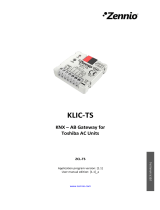 Zennio ZCL-TS Owner's manual
Zennio ZCL-TS Owner's manual
-
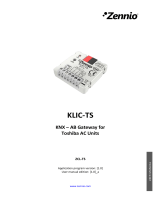 Zennio ZCL-TS Owner's manual
Zennio ZCL-TS Owner's manual
-
 Zennio ZCL-FJ Owner's manual
Zennio ZCL-FJ Owner's manual
-
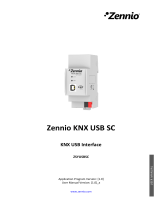 Zennio ZSYUSBSC Owner's manual
Zennio ZSYUSBSC Owner's manual
-
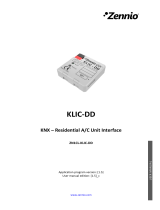 Zennio ZN1CL-KLIC-DD Owner's manual
Zennio ZN1CL-KLIC-DD Owner's manual
-
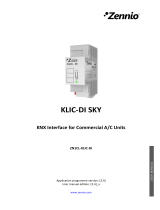 Zennio ZN1CL-KLIC-DI Owner's manual
Zennio ZN1CL-KLIC-DI Owner's manual
Other documents
-
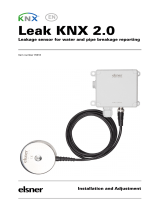 Elsner Leak KNX 2.0 User manual
Elsner Leak KNX 2.0 User manual
-
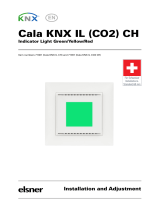 Elsner Cala KNX IL User manual
Elsner Cala KNX IL User manual
-
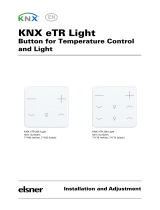 Elsner KNX eTR 205/206 Light User manual
Elsner KNX eTR 205/206 Light User manual
-
Elsner Cala KNX MultiTouch T User manual
-
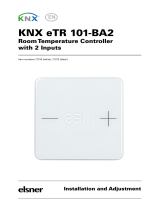 Elsner KNX eTR 101-BA2 User manual
Elsner KNX eTR 101-BA2 User manual
-
Sinclair KNX-01 User manual
-
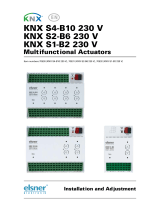 Elsner KNX S1-B2 230 V Installation And Adjustment
Elsner KNX S1-B2 230 V Installation And Adjustment
-
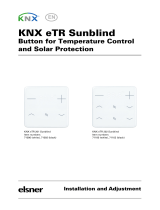 Elsner KNX eTR 201/202 Sunblind User manual
Elsner KNX eTR 201/202 Sunblind User manual
-
Niko Swiss Garde 300 Presence Detector Operating instructions
-
ABB i-bus 6108/18-BS-500 Technical Reference Manual





















































